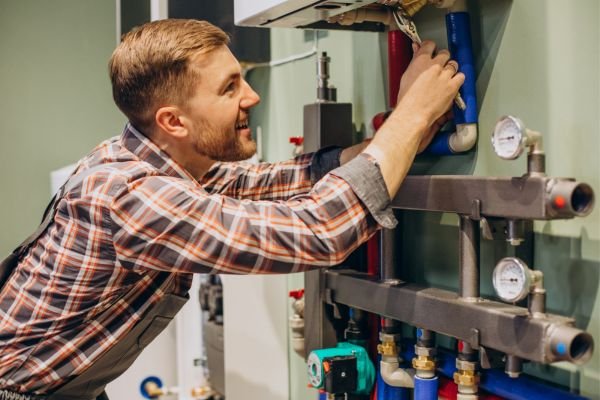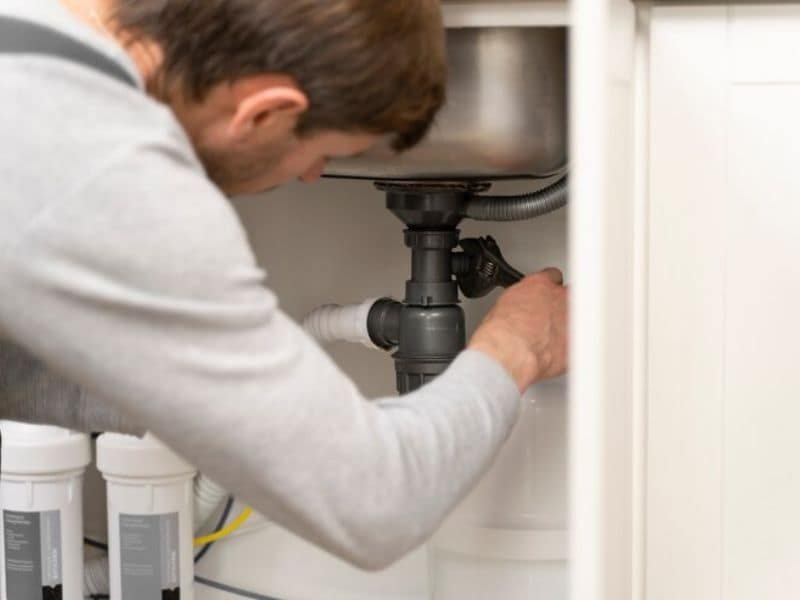Picture this: It is in the middle of winter, and decides to leave your water heater. There is no hot water, dishes are stacking, and you are surprised – how long will it take to get back and walk?
The water heater is not just about getting a new unit instead. It is also about restoring comfort, convenience and hygiene that we often take. While the replacement process can be different, to know what to expect, you can help you plan, save money and avoid surprise.
This guide will run through the average time it takes to change the water heater, what steps, which factor can delay in the process, and should you deal with it yourself or call it to a supporter.

Typical Replacement Timeframe
Average Hours for Standard Tank Replacements
For most homeowners, replacing a standard tank-style water heater is a relatively quick job—especially if the new heater is the same type, size, and location as the old one. On average, a licensed plumber can:
- Remove the old heater in about 30–60 minutes
- Install and connect the new unit in 1.5 to 2.5 hours
Total average time: 2–4 hours
That said, this estimate assumes:
- No major plumbing issues
- All parts and permits are ready
- Easy access to the water heater
If everything goes smoothly, your hot water can be back the same day, often within just a few hours.
How Long for Tankless Water Heater Swaps
Tankless water heaters take more time to install than tank-style models, mainly because they often require:
- New gas lines or upgraded electrical circuits
- Exhaust vent changes
- Wall-mounting and pipe rerouting
Replacing a tank unit with a tankless one can take 6–10 hours, or even a full day.
If you’re replacing an existing tankless heater with another of the same brand, it may take as little as 3–5 hours, depending on compatibility and placement.
READ MORE: Do You Need a Permit to Install a Water Heater?
Key Steps in the Replacement Process
Draining and Removing the Old Unit
This is the first and sometimes most tedious step, especially if the old tank is full and heavy.
- Turn off the water and power/gas supply
- Drain the tank using a hose connected to the bottom valve (can take 30–60 minutes depending on tank size and sediment buildup)
- Disconnect plumbing lines and venting
- Remove the unit from its location (basements and attics add extra time due to limited space)
In some cases, if the heater is maintained poorly, the drain valve may be closed with sediment, combining in total time.
Installing and Connecting the New Heater
Installing the new water heater includes:
- Positioning it correctly
- Connecting the cold/hot water lines
- Hooking up the power source (gas or electric)
- Installing a T&P relief valve and discharge pipe
- Connecting the vent pipe (gas models)
- Filling and testing the tank
This step typically takes 90 minutes to 2.5 hours, but complications like incompatible fittings, corroded pipes, or code upgrades can add time.
Factors That Affect Replacement Time
Type of Heater (Gas, Electric, Tankless)
- Gas Water Heaters: Require safe gas line reconnection, ventilation, and leak testing. Slightly longer install time than electric—3–5 hours
- Electric Water Heaters: No venting, often easier to install—2–3.5 hours
- Tankless System: Electrical upgradation, vent change, and more complex growing -6-10+ hours may require.
Access and Installation Complexity
The location of your water heater greatly affects how fast it can be replaced:
- Basement installs: Typically easier with direct drain access
- Attic or closet installs: Tight space = slower process
- Garage or outdoor: Easier access, but may involve extra insulation or weatherproofing
Other time-adding factors include:
- Permits and inspections (some cities require one before work begins)
- Old units that are stuck or corroded
- Code compliance updates (like expansion tanks or earthquake straps)
READ MORE: How Much Does a New Water Heater Cost?
DIY vs Professional Installation Time
Thinking of doing it yourself? Here’s what to expect.
DIY Installation Time
If you are convinced with plumbing and equipment, you can take anywhere by the water heater anywhere:
- 4 to 8 hours for a standard electric or gas tank
- 8 to 16 hours for tankless or upgrades involving new plumbing or electrical work
But keep in mind:
- Permits may still be required
- Mistakes can lead to leaks, fire hazards, or gas issues
- DIY installation may void the manufacturer’s warranty
If it’s your first time, expect it to take twice as long as a professional—and possibly longer if you hit a snag.
Professional Installation Time
Hiring a pro means:
- Less risk of code violations or improper hookups
- Fast, same-day service (usually within 2–4 hours)
- Peace of mind with warranties and inspections
Most professional plumbers also dispose of the old unit and test the system before leaving.
Do You Need a Permit to Replace a Water Heater?
Permit Requirements and Inspection Time
In many areas, replacing a water heater—especially gas models—requires a permit from your local building or plumbing authority. Permits ensure the installation meets current safety codes, including:
- Proper venting
- Earthquake straps (in some states like California)
- T&P relief valve and discharge pipe
- Expansion tanks (for closed systems)
- Electrical and gas line safety
Permit time impact:
- Applying for and receiving a permit can take 1–2 business days if not pulled in advance.
- Some cities allow same-day or next-day online permit approvals.
- Post-installation inspections may take an additional day or two to schedule.
If you are using a licensed plumber, they usually handle the permit and inspection process for you.
Skimping on Permits Can Backfire
Skipping the permit might seem like a time-saver, but it can lead to:
- Fines
- Insurance claim denials
- Safety hazards
- Trouble selling your home due to unpermitted work
Always check with your city or county before beginning the project—especially if you’re going the DIY route.
READ MORE: Is a Leaking Water Heater Dangerous?
How Long Until You Get Hot Water Again?
Getting the new heater installed is one thing, but when can you expect that sweet, steamy hot water?
Recovery Time for Tank Water Heaters
Once filled and powered on:
- Electric heaters typically take 60–90 minutes to fully heat a tank
- Gas heaters heat faster—30–60 minutes depending on tank size
During this time, you can still use cold water and even some lukewarm water, but full hot water may take up to 2 hours.
Tankless Water Heaters Deliver Immediately
One of the advantages of tankless systems is on-demand hot water. Once installed and powered up, they start producing hot water within seconds to a minute, depending on the unit and water flow rate.
Tips to Speed Up Water Heater Replacement
Want to minimize downtime and avoid cold showers? Here are some smart tips:
1. Schedule in Advance
If your current water heater is aging or leaking, don’t wait until it fails. Schedule the replacement in advance so parts and installers are ready.
2. Choose the Same Type and Size
Swaping the 50-gallon electric for another 50-gallon electric is much faster than converting to tankless or switching fuel types. Keep it simple to save time.
3. Clear the Work Area
Make sure your plumber has easy access to the water heater location:
- Remove clutter or storage items
- Provide good lighting
- Keep pets and kids out of the way
4. Check Permit Requirements Beforehand
If you’re doing the work yourself, pull permits early. Some cities offer instant online permits, while others take a day or more.
5. Buy a Heater That’s in Stock
Special ordered units can delay installation from days or weeks. Opt for easily available models at local plumbing supply stores or home improvement centers.
READ MORE: Is a Leaking Water Heater Dangerous?
Conclusion
So, how long does it take to replace a water heater? For most standard replacements, you’re looking at 2 to 4 hours—quick enough to get back to normal the same day. Tankless installations or complex upgrades may stretch to 6 to 10+ hours, especially if electrical or plumbing changes are needed.
Whether you go to DIY or rent a licensed plumber, further plan is important. Knowing your heater type, permit requirements and use of domestic water will help you make the best decisions – and minimize downtime. With the right setup, you will come back to enjoy warm water in a few hours.
FAQs
1. Can I shower right after replacing my water heater?
Wait until the tank is fully heated. Gas heaters are ready in about 30–60 minutes, electric ones in 60–90 minutes.
2. Do I need to be home for water heater replacement?
Yes. You’ll likely need to grant access, sign off on installation, and test hot water afterward.
3. How long does a water heater last?
The average lifespan is 8–12 years. Tankless heaters may last 15–20 years with proper maintenance.
4. What’s the best day to schedule a replacement?
Midweek (Tuesday -Thursday) often means rapid scheduling and less delays compared to weekends or Mondays.
5. Can I replace my water heater in one day?
Yes! If permits are ready and you’re using a pro, standard replacements are often same-day jobs.

